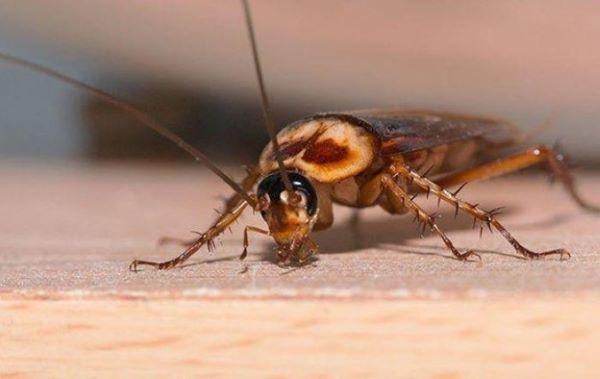
WAREHOUSE AND FOOD STORAGE PEST PREVENTION
Summer is the peak season for many pests, and your warehouse ticks a lot of boxes for them to breed and feed. Find out the best tips for warehouse pest prevention before it’s too late in today’s Hivemind blog.
What questions will this article answer?
What attracts pests to warehouses in summer?
There are many potential entry points, lots of quiet hiding spots, and food sources.
Which pest outbreaks are most common in warehouses?
Rodents, flies, stored product pests, ants and cockroaches.
Proof entry points
Seal over tiny gaps and cracks in walls, install mesh over windows and vents and fit door strips and air curtains.
Reduce moisture and humidity
Use air conditioning, fans, ventilation, dehumidifiers and desiccants and ensure your plumbing system is not leaking.
Maintain hygiene and sanitisation
Regularly clean and sanitise surfaces, tools and equipment, rotate stock and clean up spills promptly.
Follow waste management practices
Clean your waste storage areas regularly and have easily accessible bins with well fitted lids.
Safe food storage
Store food off the floor, keep the area well organised and dry, and clean food storage areas regularly
Ongoing training for staff and contractors
Educate staff to take the right preventative action steps to stop pest outbreaks.
Integrated Pest Management with Allstate
Our innovative, personalised online portal makes commercial pest control accessible, convenient and efficient.
Choose Allstate for effective and long-lasting warehouse pest prevention
Reach out for enquiries and tailored solutions to business pest concerns in all suburbs of Adelaide.
What attracts pests to warehouses in summer
For many pests, summer is the peak season for breeding, making your warehouse a great choice for them to nest, rest and feed.
This is because there are many potential entry points, lots of quiet hiding spots and food sources. In some cases, a few lucky pests may even hitch a ride over from a delivery truck.
That’s why pest outbreaks are a constant threat to many large warehouses, and if left unchecked, they can result in a breach in government regulations, leading to hefty fines and a disruption in business operations.
Which pests are most common in warehouses?
Look out for the following pests which may be lurking around your warehouse this summer:
Rodents
Messy, noisy and destructive, rats and mice are notorious pests at commercial properties of all sizes. Even if you can’t always see them, you might hear them scurrying, squeaking and making gnawing sounds around walls and roofs, especially in the evenings and early mornings. They leave behind droppings which resemble dark grains of rice.
We find that baiting is the best way to manage a rat infestation.
Flies
If you’re seeing too many flies, it’s a serious sign that food safety and compliance are at risk, especially since flies can contaminate products instantly.
In a large warehouse, watch out for them breeding near loading docks, bins, and areas with food residue. Look for fly activity near delivery entrances, waste compactors, and any wet floor drains.
We recommend installing high-quality commercial flying insect control units to manage the population and protect your stock.
Stored product pests
Well known for spoiling dried food products, stored product pests include cigarette beetles, warehouse beetles, flour beetles, sawtoothed grain beetles, lesser grain beetles, grain weevils and pantry/Indian meal moths.
You’ll see their silken webs and larvae crawling inside packaged food and around storage areas, and sometimes winged adults will even fly.
They are best treated with fogging and fumigation techniques using food safe insecticides.
Ants
Ant trails in a warehouse are less about a line to a specific food item and more about colonies thriving inside the building’s structure, like within wall voids or under large equipment.
They can damage packaging and contaminate food stock by nesting in hidden areas. Instead of following the trail outside, you need to find their internal nesting spots near utility points or staff kitchens.
Ant infestations are best managed using strategic, professional-grade ant baits and barrier treatments to eliminate the source of the problem.
Cockroaches
Seeing just one cockroach in a warehouse means you likely have many more hiding where it’s warm and damp, especially inside machinery, equipment motors, or utility ducts.
This is a major issue because they carry pathogens that can contaminate inventory. In a serious infestation, you’ll find cockroach droppings and shed skins in these concealed spots.
Cockroaches are best managed by getting professional help to target these hard-to-reach harbourage areas with specialised baits and treatments.
Proof entry points
With the ability to sneak though the tiniest of gaps, you can physically keep pests out of your warehouse by:
- Sealing all holes, gaps, cracks and crevices in walls, roofs and floors with weatherproof sealant is important for pest prevention in food storage facilities
- Install industrial mesh screens on windows, vents and openings
- Using self-closing doors
- Install door strip and air curtains across doorways, and door seals
- Inspect ducts for holes and damage, and repair as needed
Protect your warehouse from a pest outbreak, get expert advice today
 or
or
Reduce moisture and humidity
By controlling the temperature and environmental conditions inside your facility, you’ll reduce the chances of pests thriving by maintaining lower moisture in the air and removing unwanted sources of moisture.
Consider using air conditioning, fans, ventilation, dehumidifiers and desiccants in parts of your warehouse which might be at higher risk of humidity.
Ensure that windows and doors and other gaps are properly sealed, walls and roofs are well insulated and consider installing vapour carriers to reduce moisture from the ground if needed.
Regularly inspect your facility for plumbing issues, such as leaks in pipes, drains, taps, gutters and even your roof, and fix them as quickly as possible.
Maintain hygiene and sanitisation
A clean warehouse makes it much harder for a pest outbreak to occur undetected. Keep your workplace spotless by:
- Washing your hands and wearing gloves before handling food
- Regularly cleaning and sanitising surfaces, tools and equipment
- Sweeping, mopping and vacuuming floors
- Cleaning up spills promptly
- Rotate stock and storage equipment periodically
- Reduce clutter
Follow waste management protocols
Waste is a key attractant for pests, and so following a strict waste management plan at your business is essential. This should include:
- Having enough waste storage capacity
- Using robust plastic bags that won’t leak
- Safe and easily accessible bins
- Large sized, sturdy bins with well-fitting lids, such as hook or skip bins
- Cleaning your waste storage areas regularly
- Avoiding storing old cardboard boxes
Safe food storage
Pests can detect even the smallest traces of food, and this can be disastrous if your business handles food products. Tips for effective food storage pest control include:
- Keep the area well organised and dry
- Ensure that refrigerated or hot food is stored at the temperature recommended by the supplier
- Thoroughly clean and disinfect food storage areas regularly, including refrigerators
- Store food off the floor, and away from cleaning equipment or chemicals
- Use sturdy, vacuum-sealed packaging
- Ensure that all food items have a label and date
- Discard items that are out of date or with damaged packaging
- Wipe or clear away spills immediately
Act fast on pests around your warehouse, speak to an expert today
 or
or
Ongoing training for staff and contractors
For a warehouse pest management program in a workplace to be effective, encouraging all workers to be proactive in identifying early signs of an infestation and taking the right preventative action steps can make a huge difference.
When implementing a pest control strategy, it’s important to train your staff to understand compliance standards, how to maintain a workplace that discourages pest activity, including when and how to report pest sightings.
At Allstate, we offer expert, tailored advice to businesses just like yours and provide pest training programs to guide your employees.
Integrated Pest Management with Allstate
With so much paperwork to prepare and keep track of, commercial pest management can often feel like a chore if you’re already swamped with a long list of daily tasks. But with Allstate’s integrated pest management portal, we’ve made pest control accessible, convenient and efficient.
Using our innovative, online portal, you’ll have instant global access to the following pest management tools:
- Reporting logs
- Inspection reports, results and recommendations
- Safety data sheets
- Historical data and tracked records on pests and treatments in each area of your property
- Direct contact with your dedicated pest technician for a faster response
To learn more about how our tailored integrated pest management program can assist you, reach out to one of our friendly Allstate consultants today.
Choose Allstate for effective and long-lasting warehouse pest prevention
If you’re a busy warehouse or facilities manager, the hassle of handling a pest outbreak is the last thing you need, not to mention the devastating effects it can have on your business. This is where acting early on summer pest prevention for warehouses is key.
At Allstate, we’ve successfully helped commercial and industrial properties achieve and maintain a high standard of protection across many sites and suburbs across Adelaide since 1986. Our team of highly qualified and trained pest technicians offers rapid response support for tailored advice and safe, modern and discreet pest treatments to keep your business compliant and running smoothly every single day.






